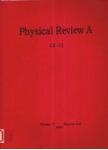版权所有:内蒙古大学图书馆 技术提供:维普资讯• 智图
内蒙古自治区呼和浩特市赛罕区大学西街235号 邮编: 010021

作者机构:Center for Quantum Information and Quantum Control (CQIQC) Department of Physics and Department of Electrical and Computer Engineering University of Toronto Toronto M5S 3G4 Canada
出 版 物:《Physical Review A》 (物理学评论A辑:原子、分子和光学物理学)
年 卷 期:2007年第75卷第5期
页 面:052304-052304页
核心收录:
学科分类:070207[理学-光学] 07[理学] 08[工学] 0803[工学-光学工程] 0702[理学-物理学]
主 题:UNCONDITIONAL SECURITY SINGLE PHOTONS UP-CONVERSION CRYPTOGRAPHY ATTACK STATES CRYPTOSYSTEMS COMMUNICATION GENERATION DEVICES
摘 要:To improve the performance of a quantum-key-distribution (QKD) system, high speed, low dark count single photon detectors (or low-noise homodyne detectors) are required. However, in practice, a fast detector is usually noisy. Here, we propose a dual-detector method to improve the performance of a practical QKD system with realistic detectors: the legitimate receiver randomly uses either a fast (but noisy) detector or a quiet (but slow) detector to measure the incoming quantum signals. The measurement results from the quiet detector can be used to bound the eavesdropper’s information, while the measurement results from the fast detector are used to generate a secure key. We apply this idea to various QKD protocols. Simulation results demonstrate significant improvements of the secure key rate in the lower loss regime in both Bennett-Brassard 1984 (BB84) protocol with ideal single photon source and Gaussian-modulated coherent states protocol; while for decoy-state BB84 protocol with weak coherent source, the improvement is moderate. We also discuss various practical issues in implementing the dual-detector scheme.